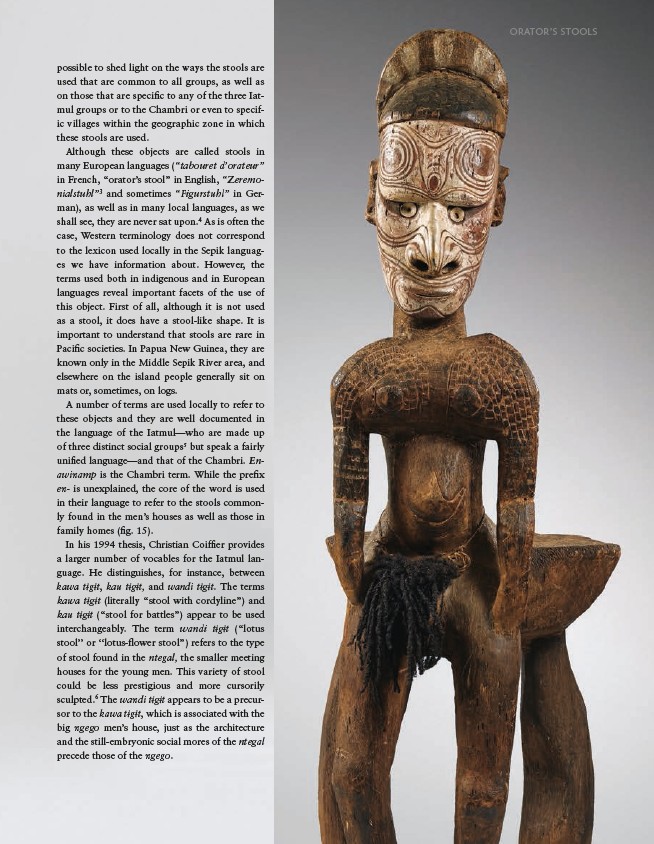
103
possible to shed light on the ways the stools are
used that are common to all groups, as well as
on those that are specific to any of the three Iatmul
groups or to the Chambri or even to specific
villages within the geographic zone in which
these stools are used.
Although these objects are called stools in
many European languages (“tabouret d’orateur”
in French, “orator’s stool” in English, “Zeremonialstuhl”
3 and sometimes “Figurstuhl” in German),
as well as in many local languages, as we
shall see, they are never sat upon.4 As is often the
case, Western terminology does not correspond
to the lexicon used locally in the Sepik languages
we have information about. However, the
terms used both in indigenous and in European
languages reveal important facets of the use of
this object. First of all, although it is not used
as a stool, it does have a stool-like shape. It is
important to understand that stools are rare in
Pacific societies. In Papua New Guinea, they are
known only in the Middle Sepik River area, and
elsewhere on the island people generally sit on
mats or, sometimes, on logs.
A number of terms are used locally to refer to
these objects and they are well documented in
the language of the Iatmul—who are made up
of three distinct social groups5 but speak a fairly
unified language—and that of the Chambri. Enawinamp
is the Chambri term. While the prefix
en- is unexplained, the core of the word is used
in their language to refer to the stools commonly
found in the men’s houses as well as those in
family homes (fig. 15).
In his 1994 thesis, Christian Coiffier provides
a larger number of vocables for the Iatmul language.
He distinguishes, for instance, between
kawa tɨgɨt, kau tɨgɨt, and wandi tɨgɨt. The terms
kawa tɨgɨt (literally “stool with cordyline”) and
kau tɨgɨt (“stool for battles”) appear to be used
interchangeably. The term wandi tɨgɨt (“lotus
stool” or “lotus-flower stool”) refers to the type
of stool found in the ntegal, the smaller meeting
houses for the young men. This variety of stool
could be less prestigious and more cursorily
sculpted.6 The wandi tɨgɨt appears to be a precursor
to the kawa tɨgɨt, which is associated with the
big ngego men’s house, just as the architecture
and the still-embryonic social mores of the ntegal
precede those of the ngego.
ORATOR’S STOOLS